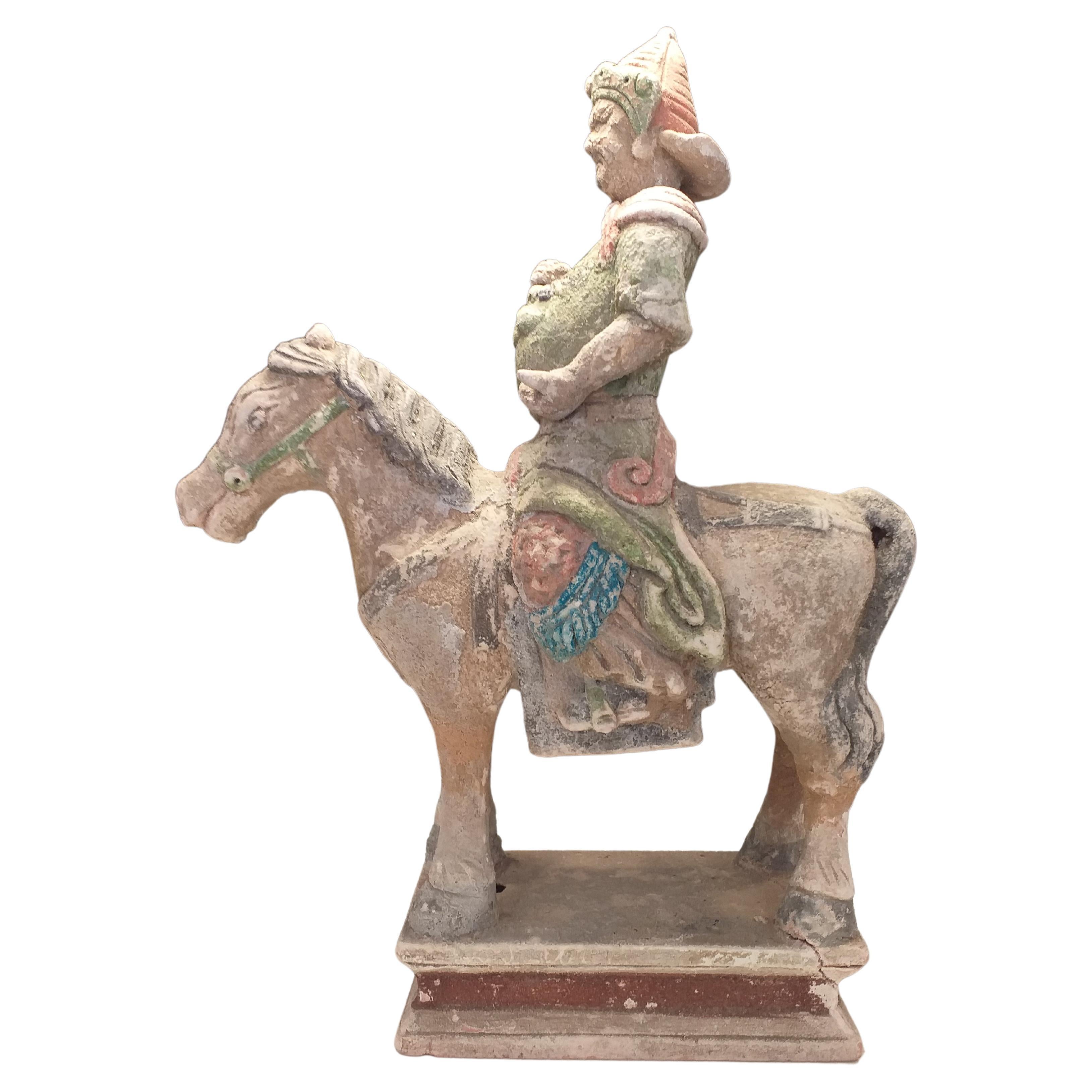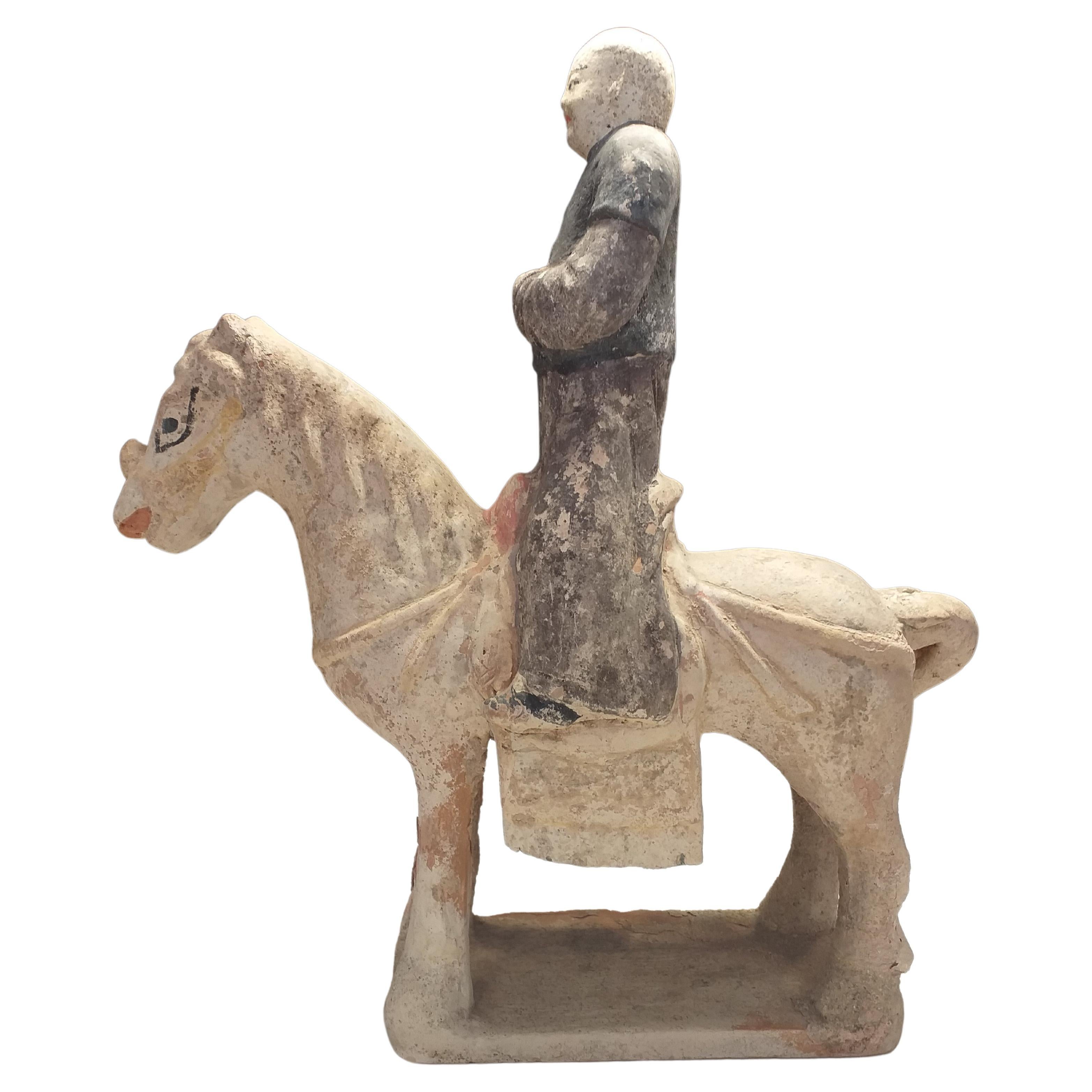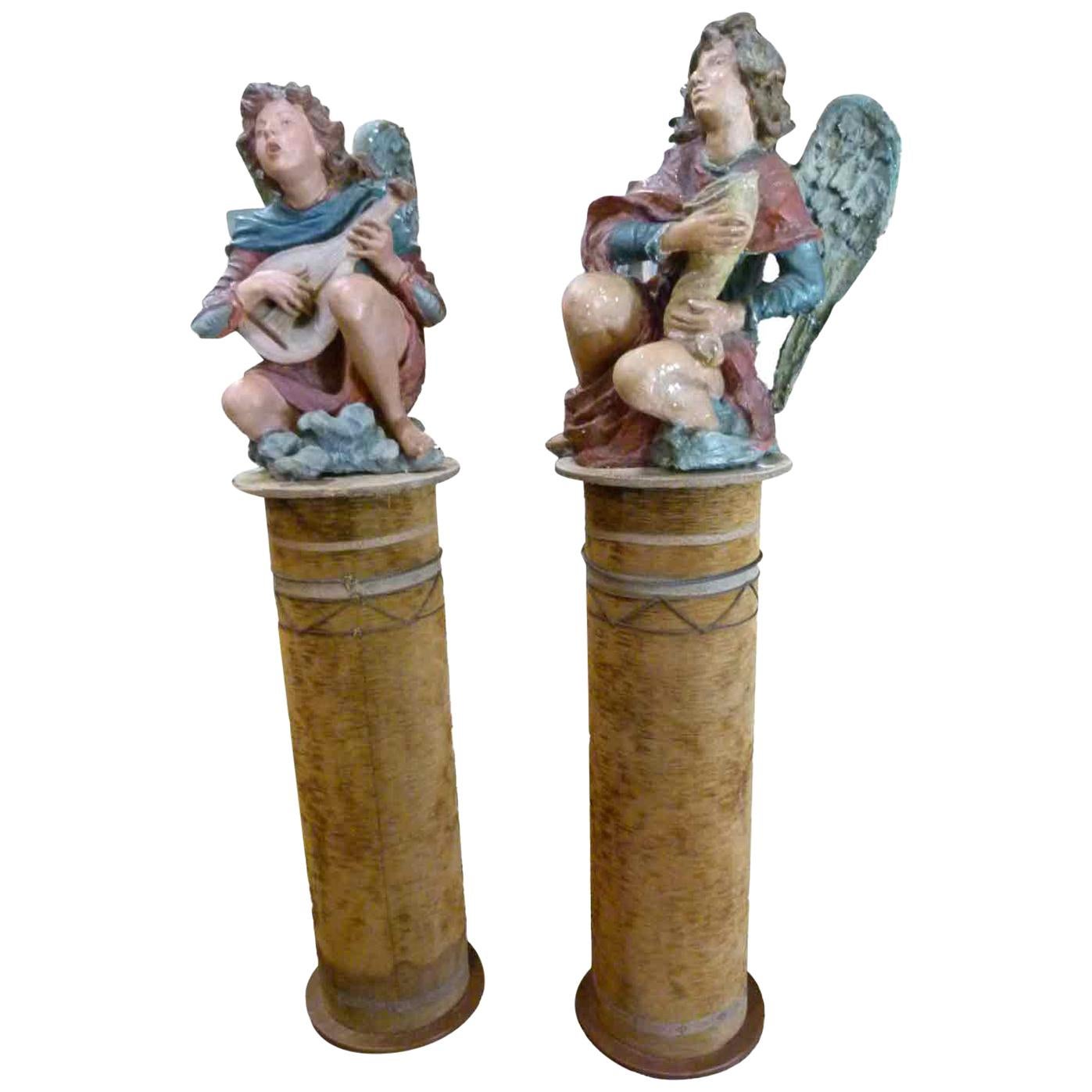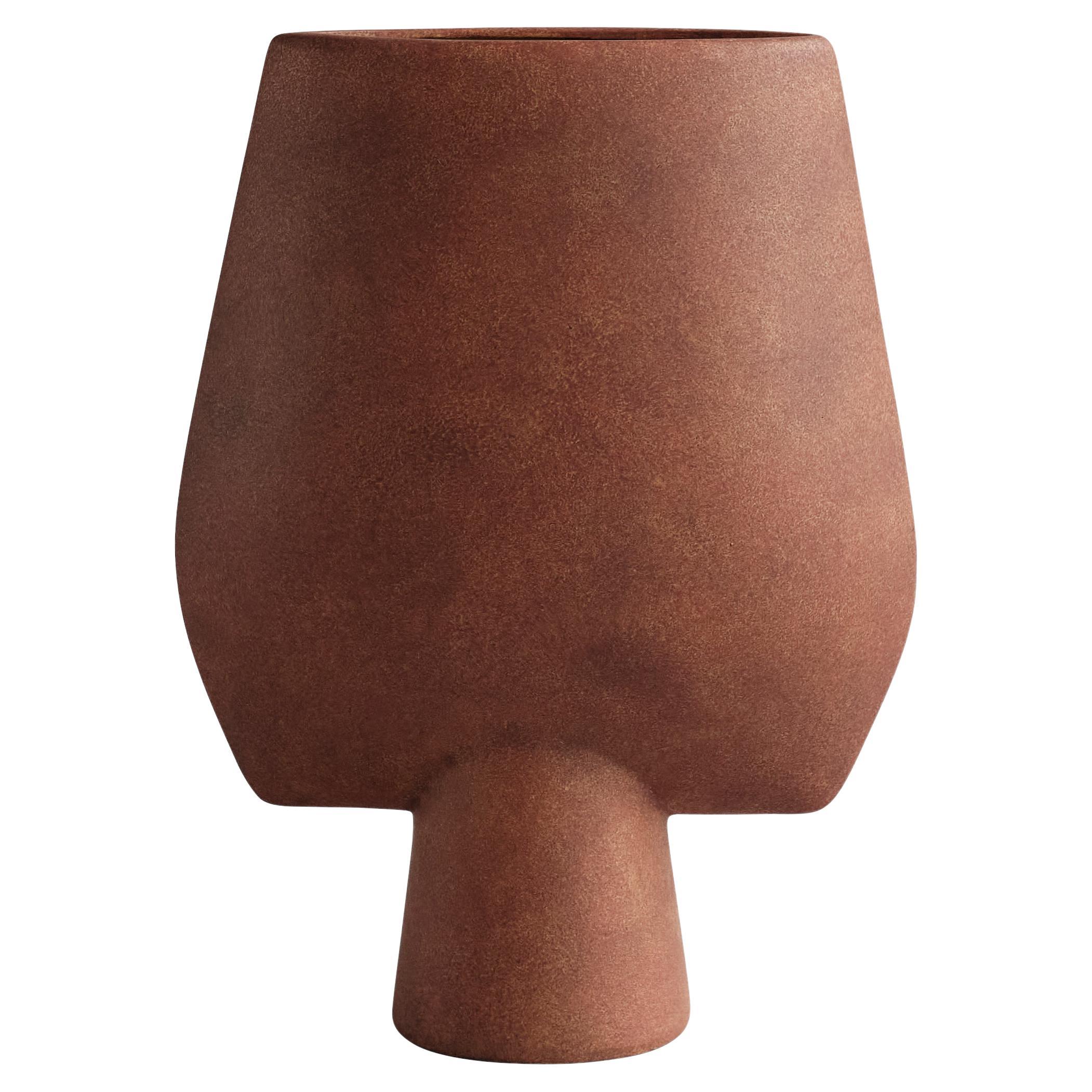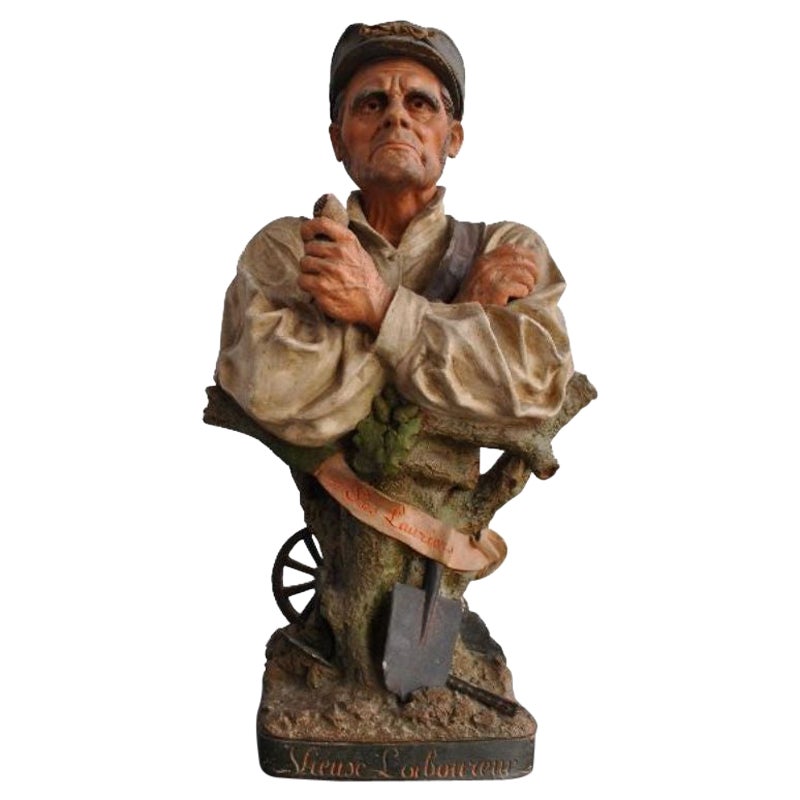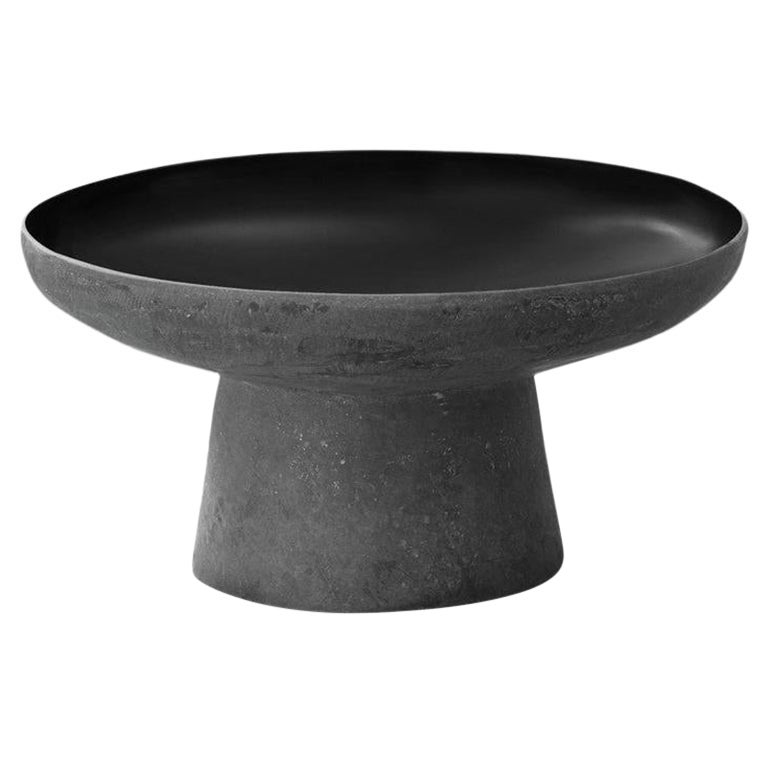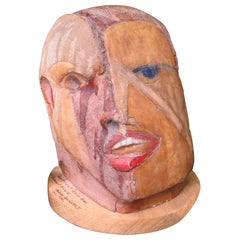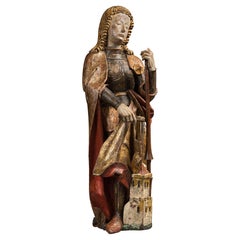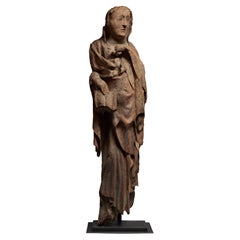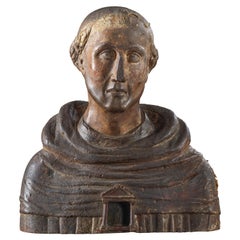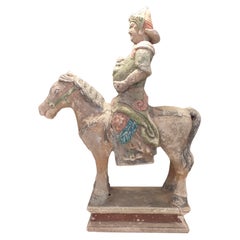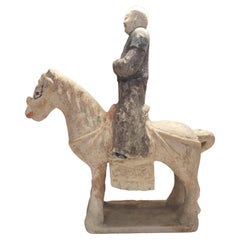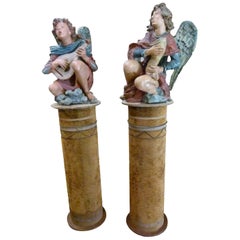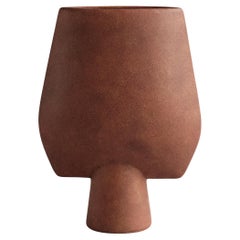Items Similar to Polychrome Terracotta "Sphere" by Anita Tullio
Want more images or videos?
Request additional images or videos from the seller
1 of 5
Polychrome Terracotta "Sphere" by Anita Tullio
About the Item
Anita Tullio (Born in 1935, Paris)
Polychrome terracotta, multiple signature stamp on base.
- Creator:Anita Tullio (Artist)
- Dimensions:Height: 14.18 in (36 cm)Diameter: 17.72 in (45 cm)
- Materials and Techniques:Terracotta,Polychromed
- Place of Origin:
- Period:
- Date of Manufacture:20th Century
- Condition:
- Seller Location:Saint-Ouen, FR
- Reference Number:Seller: 651stDibs: LU3115317898811
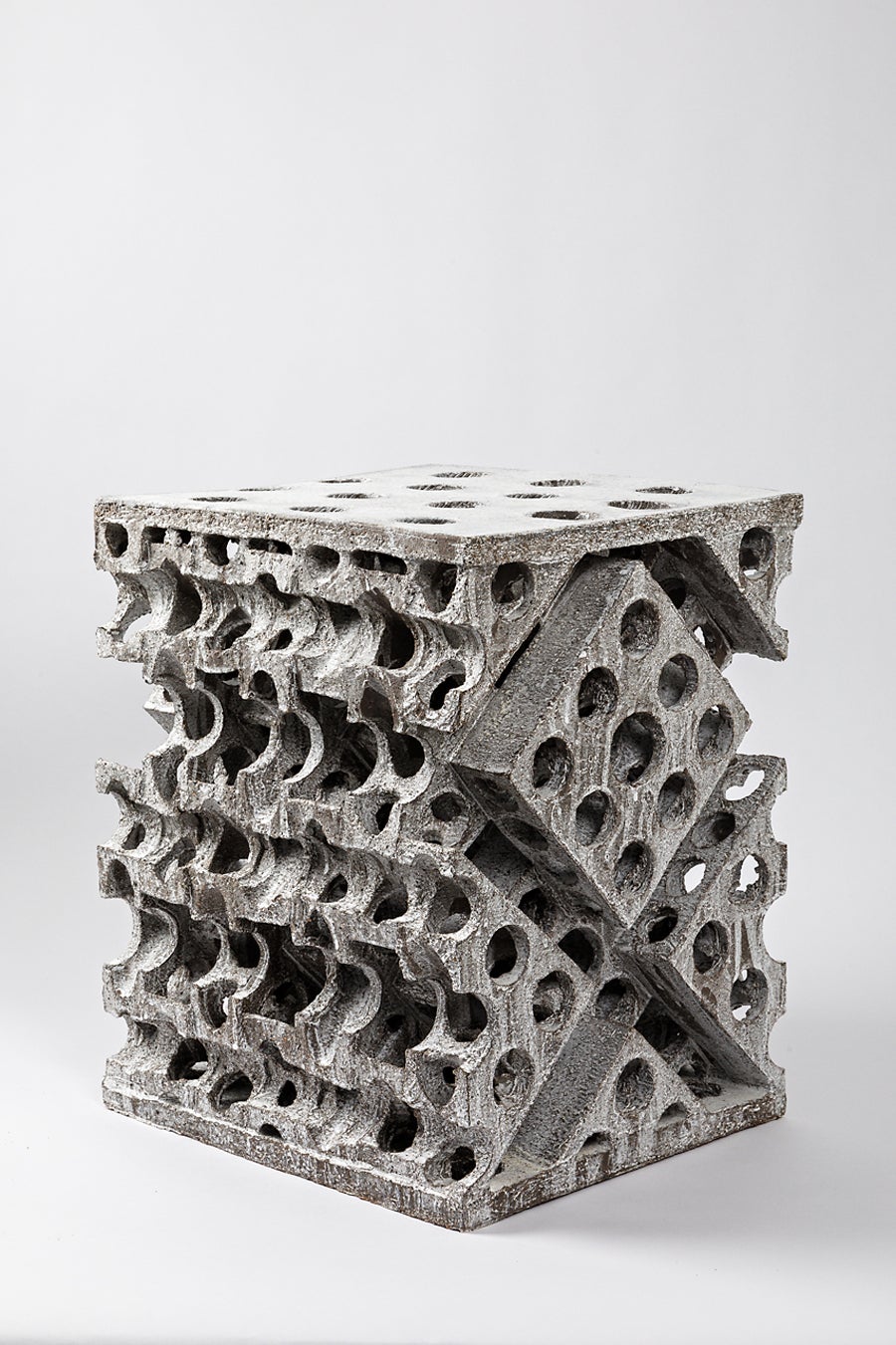
About the Seller
5.0
Vetted Professional Seller
Every seller passes strict standards for authenticity and reliability
Established in 2016
1stDibs seller since 2017
183 sales on 1stDibs
Typical response time: 3 hours
- ShippingRetrieving quote...Shipping from: Saint-Ouen, France
- Return Policy
Authenticity Guarantee
In the unlikely event there’s an issue with an item’s authenticity, contact us within 1 year for a full refund. DetailsMoney-Back Guarantee
If your item is not as described, is damaged in transit, or does not arrive, contact us within 7 days for a full refund. Details24-Hour Cancellation
You have a 24-hour grace period in which to reconsider your purchase, with no questions asked.Vetted Professional Sellers
Our world-class sellers must adhere to strict standards for service and quality, maintaining the integrity of our listings.Price-Match Guarantee
If you find that a seller listed the same item for a lower price elsewhere, we’ll match it.Trusted Global Delivery
Our best-in-class carrier network provides specialized shipping options worldwide, including custom delivery.More From This Seller
View AllTerracotta Sculpture "Man Helmet" by Osvaldo Rodriguez ‘Born in 1946’
Located in Saint-Ouen, FR
Polychromed terracotta proof, signed inside and dated 1985.
It placed on a base with a dedication of the artist's hand: "For Atila and Leela with great friendship, Osvaldo Rodriguez...
Category
Vintage 1980s Figurative Sculptures
Materials
Terracotta
Carved Polychrome Wood Depicting Saint Florian
Located in Saint-Ouen, FR
CARVED POLYCHROME WOOD DEPICTING SAINT FLORIAN
ORIGIN : SWABIA, SOUTHERN GERMANY
PERIOD : LATE 15th CENTURY
Height : 98 cm
Length : 29 cm
Depth : 24 cm
Polychrome limewood
Very fine condition
Provenance
- Swiss collection STAEHELIN-PARAVICINI - March 1939
- Auction Jacob Hecht -18 April 1929, Berlin
- Sammlung Prof Q.A. LEIMHAAS Munich, Helbing - 26 May 1908
(Research by Thierry Fraslin)
During the Middle-Age Saint Florian was particularly popular, subject to worship in Austria -Tyrol- Bavaria and Bohemia. Embodying courage and commitment Saint Florian was invoked to protect the soul of the living against sins and to keep the soul of the deads from the purgatory.
From the mid-15th century he safeguards from water and fire. The legend has it that when he was young the saint had contained the fire of a burning...
Category
Antique 15th Century and Earlier Figurative Sculptures
Materials
Wood
Saint Woman in polychrome carved wood
Located in Saint-Ouen, FR
SAINT WOMAN IN POLYCHROME CARVED WOOD
ORIGIN : ITALY
PERIOD : late 13th century
Height : 103 cm
Length : 28 cm
Width : 16 cm
Remains of polychromy
...
Category
Antique 15th Century and Earlier Italian Gothic Figurative Sculptures
Materials
Softwood
16th Century Polychrome Reliquary of a Monk
Located in Saint-Ouen, FR
The monk is depicted with an oval face, marked with high and strong cheekbones, sunken cheeks, strong jawbones and a cleft chin. His almond shaped eyes are opened under very strong a...
Category
Antique 16th Century Italian Renaissance Busts
Materials
Wood
Sculpture in Polychrome Wood Representing Saint Anthony Hermit
Located in Saint-Ouen, FR
Sculpture In Polychrome Wood Representing Saint Anthony Hermit
Origin : East of France
Period : End of the 15th century
Measures: Height : 97 cm
Width : 32 cm
Depth : 26 cm
Polychrome wood
The saint is represented by an old, bearded man, dressed in a hooded monk’s habit over the tunic of his religious order. He is stood upright, holding an open book, La Règle des Antonnites, in his right hand. In the other hand, he is holding a staff in the form of the Greek letter tau with a rosary hanging down over it. At his feet lies a pig wearing a small bell around its neck.
He rests on his right leg, whilst the left advances forward as if he were about to start walking. His belted tunic, forming several rectilinear pleats, is covered by a habit which is open only at the waist, therefore revealing these pleats. He is also wearing a hooded scapular over his shoulders.
His thick hair escapes from under a distinctive hat, forming a collection of finely sculpted ringlets. This fine detail is also applied to the four long ringlets of his superb beard, which sit just below the shorter ones of his moustache.
His face is a picture of harmony, with lowered eyes and his small mouth lost amongst the abundance of hair.
At his feet on a pedestal of flames, hinting to the fire of Saint Anthony no doubt, a pig trying to scratch its ear.
Born in 251 in Upper Egypt, he withdrew into solitude at a very young age. He would have been plagued in the desert with extremely diabolical temptations.
He payed a visit to Saint Paul the hermit towards the end of his life. He was the dean of the Thébaïde anchorites, who was miraculously fed by a crow. On the day that Saint Anthony visited, the crow brought two portions of bread in its beak instead of one.
Some time after, having learnt of the death of his venerable brother, Saint Anthony went to bury him with the help of two lions.
The King of Catalonia pleaded to come and exorcise his posessed wife and children. He left Thébaïde for Barcelona. He appeared at the house of the provost André, bringing him a sow in his mouth, a monstrous piglet born without eyes. André wanted to kill it but Anthony stopped him, telling him that the poor beast wanted to ask for healing, as the King had done for his offspring.
He made a sign of the cross on the piglet and it suddenly acquired its sight and the members which it did not have at birth. After which, André, guided by Saint Anthony, exorcised the Queen of Catalonia in the same way whilst she knelt at his feet.
Théophile discovered the body of Saint Anthony wrapped in a palm fibre tunic which he had been given by Saint Paul the Hermit.
In the Red Sea Desert there are two Coptic, IV century, monasteries which stand next to each other, one dedicated to Saint Anthony, the other to Saint Paul the Hermit. They are the oldest monasteries in the Christian world.
The body of the famous hermit was transported to Constantinople and would have been transferred into the abbaye, Saint Antoine-en-Viennois, Dauphine.
The Antonnite Order was a charitable order which specialised in treating contagious diseases. The fire of Saint Anthony, was identified by doctors as a grangrenous ergotism, caused by a diet of rye bread contaminated with the parasite ergot. The effect of this is the drying out of hands and feet which then need amputation, the plague and then later syphilis. All the skin diseases came from Saint Anthony.
Saint Anthony’s pilgrimage to Dauphine rivaled that of Saint Jacques to Compostela. Thanks to the various commanderies created by the mother house, Saint Anthony’s cult spread throughout Christianity.
In order to maintain commanderies and their hospitals, the Antonnites resorted to pig farming. They enjoyed having the benefit of letting their pigs roam freely through the streets of the villages, with little bells round their necks that had a recognisable chime so that they were able to find them. This privilege was very envied by other monastic Orders.
Saint Anthony was the patron saint of several crafts such as basket makers and gravediggers.
However it is to the pig that he owes the majority of his patronages; pigkeepers, pig sellers, butchers, porc butchers, brush makers who use pig bristle and bell-ringers because of the pig bells...
Category
Antique 15th Century and Earlier Figurative Sculptures
Materials
Wood
Important 14th Century Polychrome Limestone Virgin from Lorraine
Located in Saint-Ouen, FR
Provenance :
- Kunsthaus Heinrich Hahn, Frankfurt am Main, sale 16, June 17, 1930, lot 16.
- Sotheby's, Amsterdam, Feb. 26, 2006, lot 201.
HISTORIC
Located between Moselle valley and Meuse valley, framed by the Vosges Mountains on the south side and the duchy of Luxembourg on the north side, the duchy of Lorraine is the result of several partitions. It starts with the 9th century when the Carolingian empire is divided, with Lothar 1st inheriting Lotharingia. In 959 this territory was in turn divided in two; Lower and Upper Lotharingia, the latter being the forebear of the duchy of Lorraine. This duchy was under the rule of the Holy Roman Germanic Empire until 1736 when it was absorbed by the kingdom of France.
All along its history the duchy of Lorraine has found itself in the midst of many conflicts. Alliances and feuds marking European history were always particularly sensible in Lorraine where instability was frequent. Because of its geographic position the duchy of Lorraine was also an artistic crossroad.
Hence the duchy of Lorraine becomes from the 13th century onwards an important artistic centre where a particular type of Virgin and Child appears. According to professor J. A. Schmoll the characteristics of Lorraine sculpture burgeon around 1280-1300 in the Aube region. It presents “vigorous volumes, restrained movements, rare but solemn gestures and a strong interiorised and stern expression”. Those Virgins look similar with a wide forehead, a shield- or oval-shaped face, large neck, small lips and a cleft chin.
This model is particularly in favour during the 13th century because of the revival for Marial worship and for the theme of the Virgin and Child. It bears witness to a new religious sensibility with a more intimate vision of religious practice.
DESCRIPTION
The important 14th century Virgin we present to you is one of the most beautiful examples of sculptural art from Eastern France, with her fascinating distant gaze.
Her contrapposto posture is induced by the weight of the child she carries high on her left side. The child has a chubby face framed by blond hair with well defined curls and he wears a long red V-collared tunic from which emerge his feet. The fabric is animated by long folds. The position of the right foot turned to the back is a detail we can notice on several Virgins from Lorraine. He holds a bird that seems to be pecking his thumb.
“The bird /held by the child in his hands/ has been read as a reference to an episode from Christ’s childhood when he has moulded sparrows with clay before giving them life. It appears in the apocryphal gospel of Pseudo-Matthew (ch. 27) and later in the Quran (III, 43, v. 110). However the iconography seems to be more influenced by the concept of Redemption or of Eucharist, the bird symbolising the soul of the Christian about to be redeemed or revitalised.”
Mary wears a long dress with two rock crystal cabochons remaining from the original five. She is covered by a red cloak enriched with old-gold motifs draped as an apron falling in long pleats along her left hip. The relief treatment and the volume of the cloak developing a network of concentric pleats contrast with the the flat pleating of her dress. They nevertheless suggest the curve of her bent right leg.
She wears a floret crown securing a short thin veil carved in very low relief. From it emerges her blond curled hair characteristic of the 13th century. The large face with almond-shaped eyes, straight nose, small lips and cleft chin casts its gaze afar in a fashion typical of 13th century Virgins.
In her right hand she holds a lily flower. In a very refined manner the artist has carved a band on her right ring-finger.
In the back, carefully sculpted, spreads the minutely detailed short veil.
COMPARATIVE STUDIES
This sculpture of great quality presents obvious similarities with Virgins from Lorraine, designated by William Forsythe...
Category
Antique 15th Century and Earlier French Gothic Figurative Sculptures
Materials
Limestone
You May Also Like
Rider, Polychrome Terracotta, Ming Period
Located in Saint ouen, FR
Rider.
Polychrome terracotta.
Ming period.
Removable head.
H 40cm. L 29cm. W 11cm.
1400€.
Category
Antique 15th Century and Earlier Chinese Figurative Sculptures
Materials
Terracotta
Rider 2, Polychrome Terracotta, Ming Period
Located in Saint ouen, FR
Rider.
Polychrome terracotta.
Ming period.
H 30cm. L 27cm. W 11cm.
1200€.
Category
Antique 15th Century and Earlier Chinese Figurative Sculptures
Materials
Terracotta
Polychromed terracotta pair of Angels
Located in Vulpellac, Girona
19th Century polychromed terracotta pair of Angels. The pedestals shown in the photos are not included.
Measurements:
Angels figure: 69 cm (23,6...
Category
Antique Early 19th Century Spanish Neoclassical Figurative Sculptures
Materials
Terracotta, Wood
$5,112 Sale Price / set
33% Off
Terracotta Big Sphere Vase Square by 101 Copenhagen
Located in Geneve, CH
Terracotta big sphere vase Square by 101 Copenhagen
Designed by Kristian Sofus Hansen & Tommy Hyldahl
Dimensions: L33 / W16 / H43 CM
Materials: Ceramic
The Sphere collection celebrates unique silhouettes and textures that makes an impact with the decorative charm of sculptural art. Elegantly sculpted, each vase is finished in intricate ornate detailing. Inspired by ancient Chinese vases...
Category
2010s Danish Modern Vases
Materials
Ceramic
Polychrome Terracotta 1930 Signed Le Guluche
By Joseph Le Guluche
Located in Marseille, FR
Polychrome terracotta signed Joseph Le Guluche (1849-1915) French sculptor (1849-1915) representing an old plowman with the inscription laurels on a ribbon. Good general condition di...
Category
20th Century Figurative Sculptures
Materials
Terracotta
Anita by Imperfettolab
Located in Geneve, CH
Anita by Imperfettolab
Dimensions: Ø 34 x H 16 cm
Materials: Fiberglass
Available in other colors and sizes.
Fiberglass risers that strike the eye, glorifying the object they suppor...
Category
2010s Italian Modern Decorative Bowls
Materials
Fiberglass
$708 / item
Recently Viewed
View AllMore Ways To Browse
Polychrome Terracotta
Terracotta Spheres
Borne Ceramique
Salvatori Glass
Tall Lucite Sculpture
Wooden Circle Sculpture
Lit Vertical Sculpture
Hand Bergstrom
James Rowland
Scandinavian Mythology
Teak Root Sculpture
Anvils Used
Crumpled Glass
Curtis Jere Metal Flower
Curtis Jere Stainless
Teal Glass Sculpture
Marble Cube Sculpture
Modern Art Sculture
